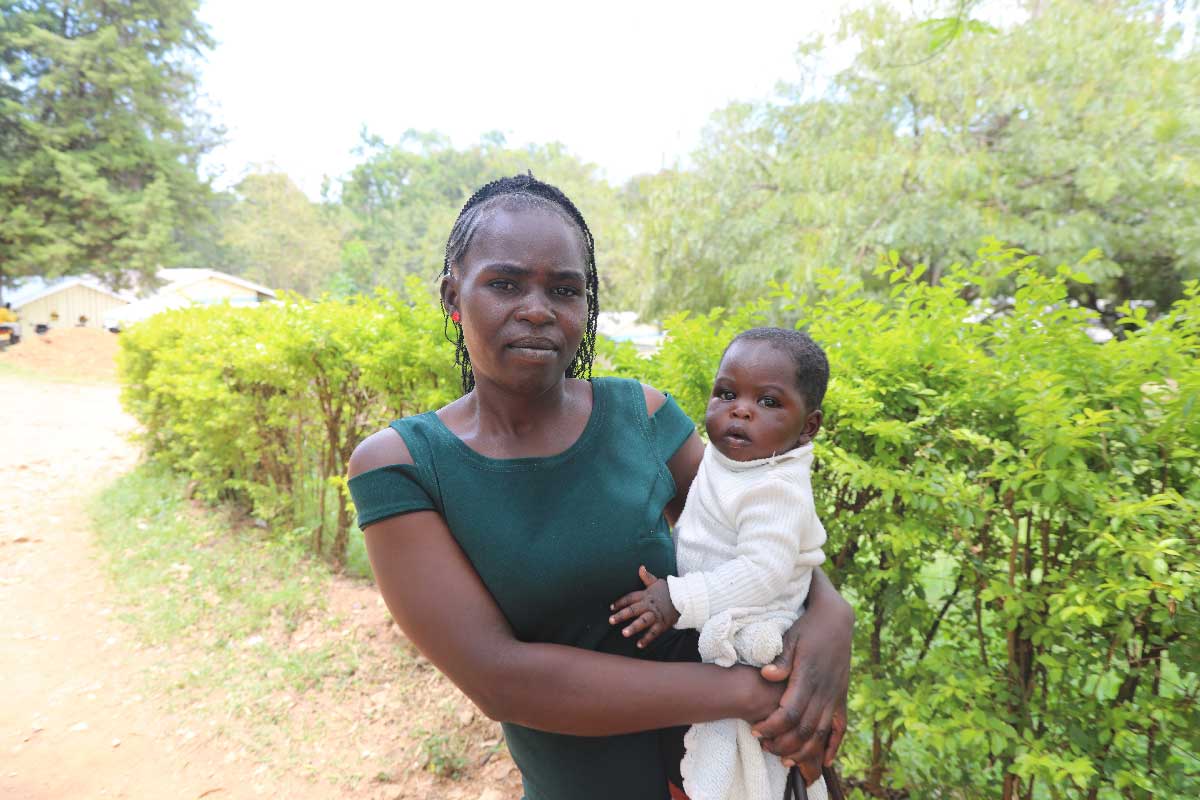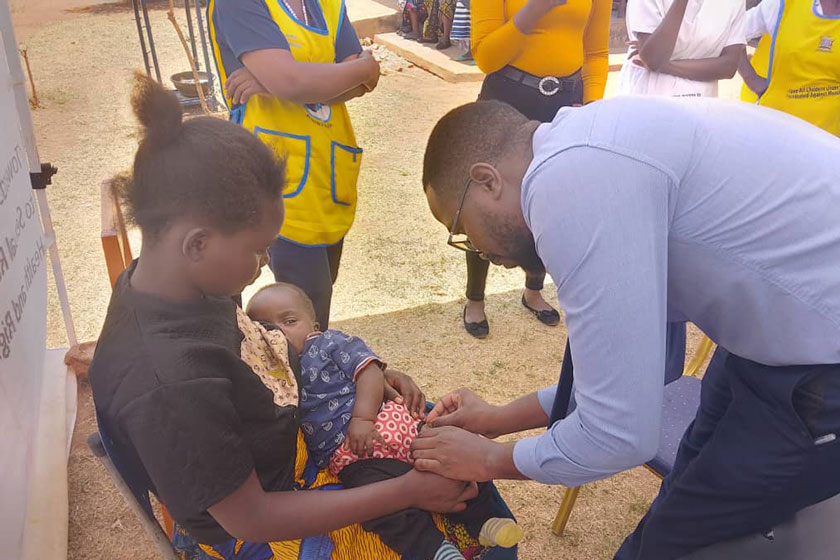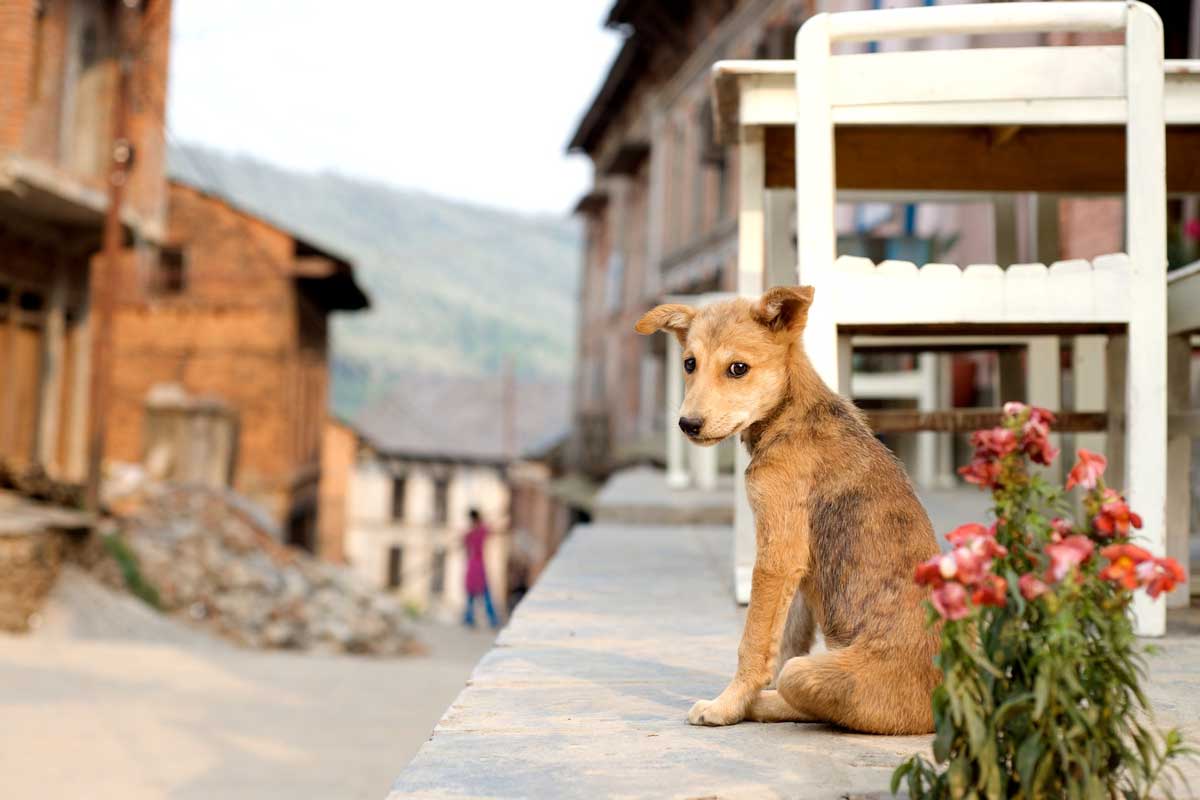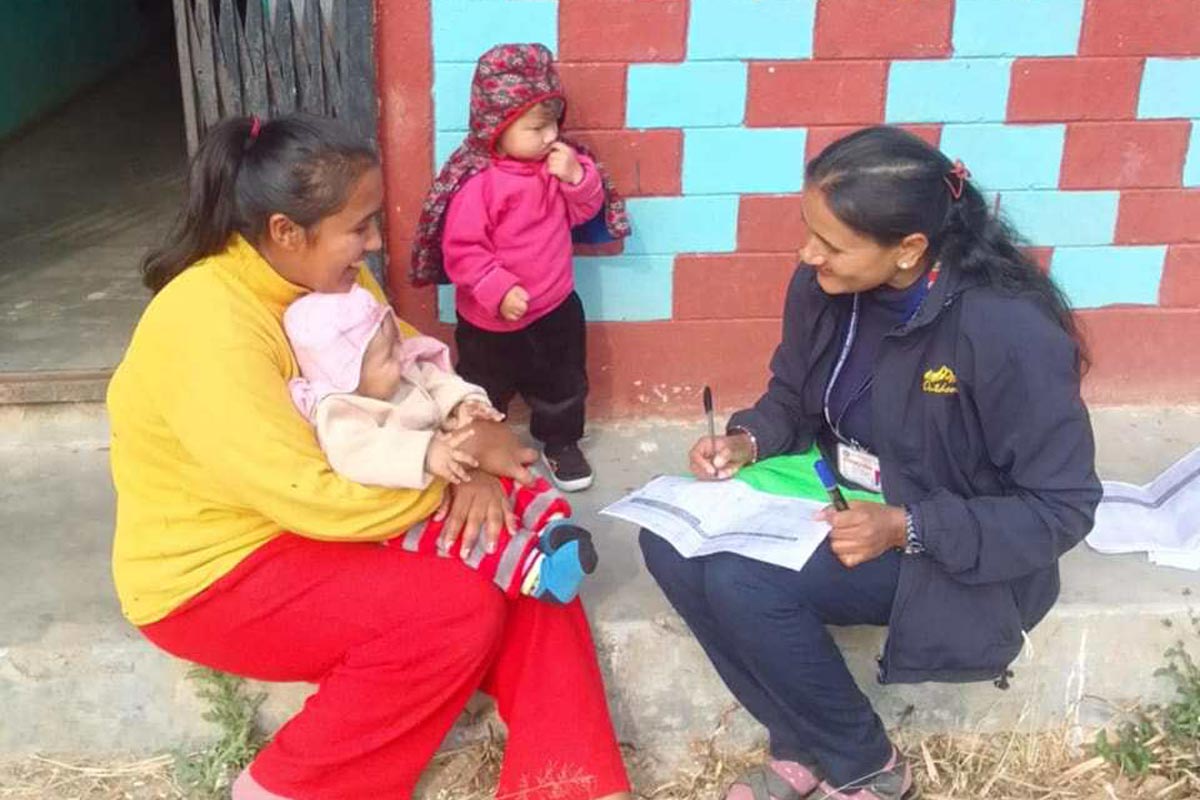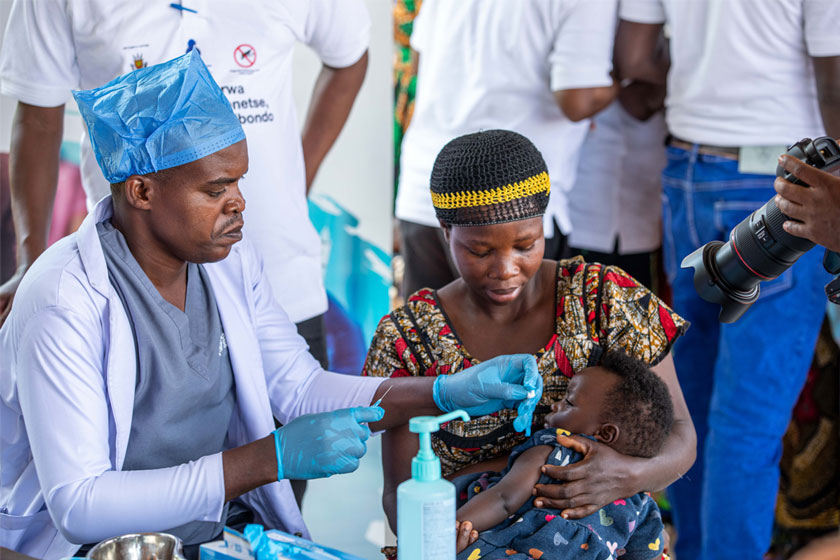Nepal has officially eliminated rubella. Here’s what it took
In 2009, almost a fifth of pregnant women at Nepal’s main maternity hospital were infected with rubella, a virus that causes miscarriages and birth defects. The road to safety has demanded grit and consistency, health workers say.
- 17 November 2025
- 4 min read
- by Pragya Timsina

In 2009, a study was published that shocked Nepal’s health officials. Research conducted at Nepal’s largest maternity hospital, Paropakar Maternity Hospital in Kathmandu, showed that the prevalence of rubella infection among women visiting for antenatal care stood at a staggering 19.35%.
Rubella, typically a mild infection in children, can lead to complications like arthritis and encephalitis in adults, and is often a disaster in pregnant women. Rubella-infected pregnant women face a 90% risk of miscarriage. Babies that make it can develop Congenital Rubella Syndrome (CRS): serious birth defects that can include heart problems, blindness and deafness, intellectual disability, and liver or spleen damage.
Discussions, planning and budget-juggling ensued. The risk was most acute among women of child-bearing age, but its origin was more general: high rates of circulating rubella infection in the population.
In 2013, Nepal was able to formally launch rubella as part of the routine national immunisation schedule. The two-part measles-rubella (MR) vaccine would supplant the measles-only vaccine formerly given to infants at nine months of age.
But both before this introduction and again in 2019–20, mass vaccination campaigns were carried out to quickly build population immunity – not just in children, but also in older age groups.
A little over a decade later, that strategy has been borne out. This August, the WHO South-East Asia Regional Office officially announced that Nepal, with the support of its international partners, had achieved rubella elimination. Dr Rajesh Sambhajirao Panday, WHO Representative to Nepal called it “a landmark achievement not only for the country, but also or the entire south-east Asia region.”

Road to safety
To achieve elimination, Nepal made the vaccine available free of charge to every child in the country as routine, and also conducted periodic catch-up campaigns to reach kids who might have been missed.
That proved an invaluable measure in moments of crisis, like after the earthquakes of 2015 and 2023. Even in 2020, a year in which childhood immunisation was disrupted in countries across the globe, a door-to-door outreach effort meant that more than 14,800 children aged nine months to five years were caught up on their MR vaccines.
Also crucial has been the development of a highly sensitive rubella surveillance system. Laboratory-based rubella surveillance began in 2004, followed by the introduction of case-based measles and rubella surveillance in 2007. Under this system, every suspected “fever + rash” case is investigated by collecting specimens for lab confirmation. Those cases are then definitively categorised as measles, rubella, or neither. Over the years, this system has expanded to cover more than 1,000 reporting sites in 682 municipalities, representing over 90% of the country’s local government units.
In parallel, surveillance for congenital rubella syndrome (CRS) was improved through the establishment of 15 sentinel sites across all seven provinces.
For Nepal’s corps of healthcare workers, each new chapter on the road to elimination has come as a relief. Laxmeshor Jha, Immunization Focal Person for Madhesh Province, remembers a time when the brutal impact of rubella used to routinely fly under the radar.
He recalled how one mother-to-be in his community had a mild fever and rash during the third month of her pregnancy. Staff at the village health post termed it a seasonal flu. Months later her son was born deaf, with vision impairments. Only then did a doctor at a tertiary hospital in Madhesh Province diagnose Congenital Rubella Syndrome. That used to be a common story, he and other health workers tell VaccinesWork.

Have you read?
Community by community
Shyam Pokharel, Immunization Focal Person for Dhading district, is happy. He has been part of the rubella push-back for about a decade, and the announcement of elimination is a vindication of a great deal of hard work.
The early days, in particular, were onerous. Dhading is a hilly district with a difficult terrain. Most villages lack proper access to road transportation, and he remembers walking for two to three days to reach communities. Once there, he faced vaccine acceptance hurdles. Two to three more days might be required for door-to-door outreach, explaining the importance of MR vaccination to each and every villager.
Looking back from the threshold of success, however, Pokharel had nothing but gratitude for the local leaders, teachers and especially Female Community Health Volunteers (FCHVs) whose effort played a pivotal role in increasing community engagement and trust.
No time for complacency
But elimination as a public health problem[1] is not the same as eradication. That means rubella could return to Nepal; continued vigilance is a must.
“Now the government will focus more on covering all the Nepalese children via the National Immunization Program. Also, the focus will be on surveillance of rubella in the community,” said Dr Prakash Budhathoky, spokesperson to Ministry of Health and Population.
Should a single case crop up, he adds, it’s back to campaign-mode.
[1] Rubella elimination is defined as: “The absence of endemic rubella transmission in a defined geographical area (e.g. region or country) for ≥12 months and the absence of CRS cases associated with endemic transmission in the presence of a well-performing surveillance system.”
More from Pragya Timsina
Recommended for you

